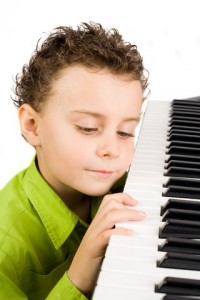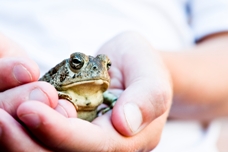Should we be using different measuring tools for intelligence? In 1983 Dr. Howard Gardner, a professor of education at Harvard University, developed the theory of multiple intelligences. This theory allows for a multi-faceted look at the qualities and talents that comprise true intelligence.
Homeschoolers especially enjoy the flexibility of incorporating this theory into all lessons in all subjects. Math, often the most challenging subject to teach and learn, is made more interesting and effective when looked at through the lens of multiple intelligences. According to Dr. Gardner’s theory, there are eight intelligences or learning styles. Here they are, with suggestions for how each one might fit your child(ren)’s learning needs and how to integrate them with your math lessons. Note that most children will often exhibit more than one!
Linguistic-Auditory (“word-smart”)
Loves to read, write, recite, and talk! S/he feels most comforatble curled up with a book or listening to/telling a story. Incorporate stories like “The Seven Swans” or “The Twelve Months” into first grade number recognition lessons. Clapping game rhymes like “Miss Mary Mack” could be a lead-in to times tables practice in second or third grade math lessons. And word problems at all levels!

Logical-Mathematical (“number-reasoning smart”)
Loves math and science! S/he is also good at problem-solving, recognizing patterns, and likes to conduct scientific experiments. Focus on the relationship between patterns and numbers, i.e. geometric forms and numbers, like the triangle and the number 3, the square and the number 4, etc. Use number “tricks” to encourage and enliven math practice, and point out patterns in the times tables, factors, etc. Relate math concepts to some of those science experiments!

Bodily-Kinesthetic (“body-smart”)
Loves to be physically active and has excellent eye-hand coordination and dexterity. S/he prefers hands-on activities, tends to remember by doing rather than hearing or seeing, and is very good at dance and/or sports. Liven up your math lessons with lots of physical movement like stepping and counting, first the numbers, then the times tables. Adapt vigorous games like hopscotch or tag for effective math skills practice, and include hands-on activities like making “real” numbers with clay and other materials and always use manipulatives to help make abstract math concepts more concrete and understandable.

Musical (“music-smart”)
Enjoys singing and playing musical instruments, recognizes musical patterns and tones, and remembers songs and melodies well enough to sing or play “by ear.” S/he’s good at thinking in patterns, rhythms, and sounds. Relate music theory to math concepts (i.e. how the scales and notes relate to fractions). Have your musical student compose songs that are helpful learning aids for challenging math concepts such as learning the steps in long division.

Visual-Spatial (“picture-smart”)
Loves to draw, paint, put puzzles together, and interpret graphs, charts, and maps. S/he’s good at visualizing things and following or giving directions. Include art as an integral part of your math curriculum with colorful and imaginative illustrations of concepts and lessons. Use visual patterns like magic squares to teach various number patterns. Teach with manipulatives, i.e. color-coded columns for place value, coin rubbings to teach decimals and fractions using money amounts, and incremental, color-coded fraction pieces.

Interpersonal (“people-smart”)
Interacts well with others, and is skilled at assessing their emotions, motivations, and intentions. S/he’s good at verbal and non-verbal communication, seeing things from different perspectives, resolving conflicts, and creating positive relationships. Your math curriculum should include lots of group activities like math-adapted games, cooperative problem solving, and group projects that use math skills like building, cooking, gardening, and crafts.
Intrapersonal (“self-smart”)
Self-reflective and aware, good at assessing strengths and weaknesses, understands the basis for motivations and feelings, S/he’s a creative day-dreamer who also enjoys analyzing theories and ideas. Include lots of “back story” in your math curriculum: history and biography, like the origins of the modern measurement system (the king’s foot, the original word for mile, mille: a thousand paces), the history of number systems, and mathematician’s life stories.
Naturalistic (“nature-smart”)
Loves exploring the great outdoors, and has a lively interest in all things in nature, like botany, biology, and zoology. S/he’s good at cataloging or categorizing information, and likes camping, gardening, and hiking. Imbue your math curriculum with multiple examples of how math appears in the natural world, such as the spiral in the sunflower and snail shell, the hexagon in the snowflake and honeycomb, and even the octagon in street stop signs!

Integrating all these aspects into your homeschool math curriculum will not only insure that your child(ren) will be more engaged and interested in their math lessons, but that their interest will result in better retention, higher test scores, and a lifelong love of learning. Math, more so than any other subject, needs to be taught and learned with high-interest, versatile, and creative materials and methods! A genius lies sleeping in every child, with a face that’s multi-faceted and diverse. Celebrate them!



















